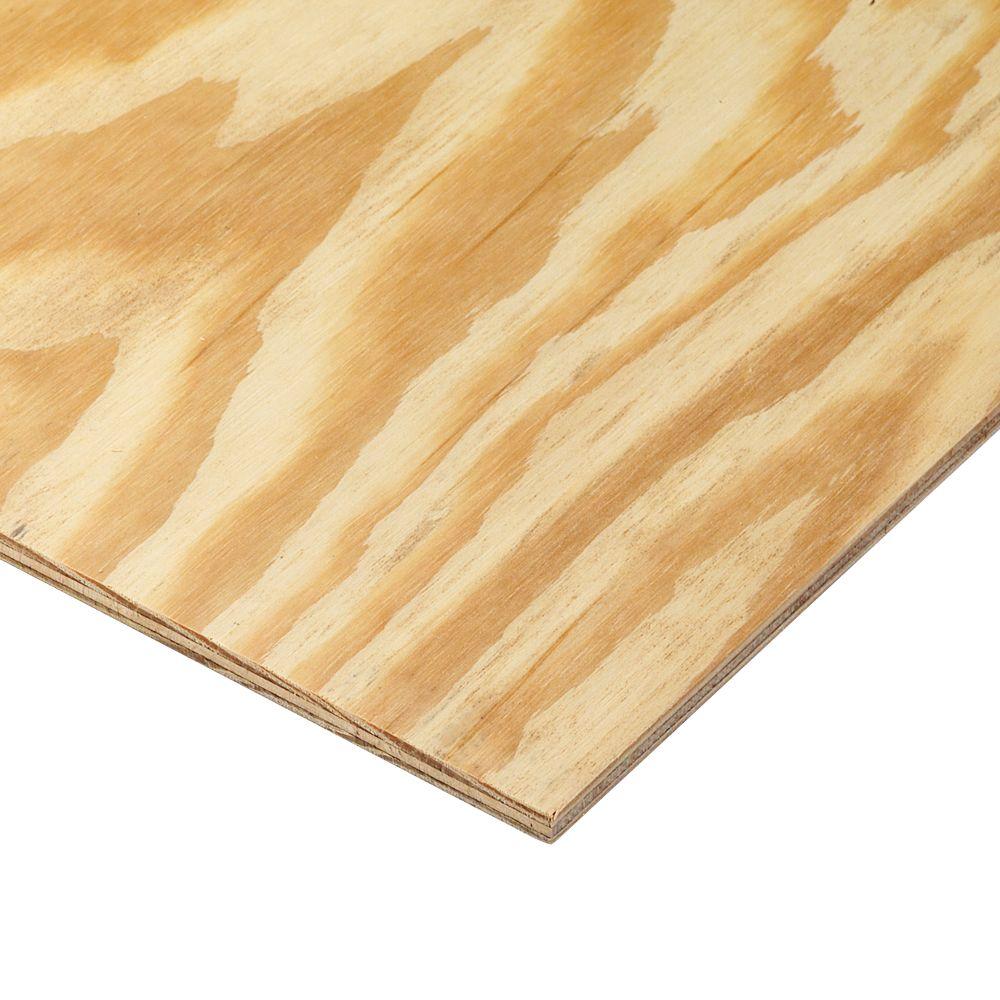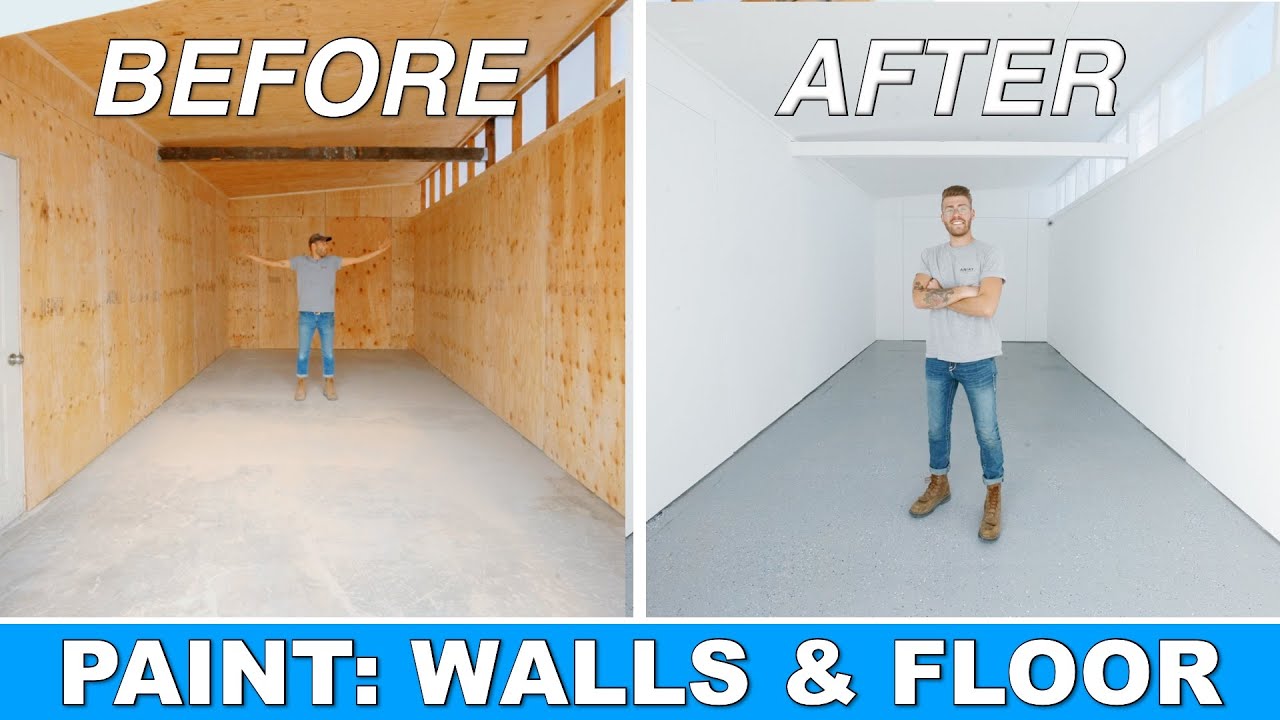When it comes to DIY projects, painting can be a fun and creative way to spruce up your living space. But what about plywood sheathing? Can it be painted? Well, you’re in luck! In this article, we’re going to dive into the world of plywood and explore whether or not it can be transformed with a fresh coat of paint.
Plywood sheathing is a versatile material commonly used in construction, but its aesthetic appeal may leave something to be desired. If you’re looking to add a pop of color or a new finish to your plywood walls or furniture, you might be wondering if painting is an option. So, let’s find out if plywood sheathing can be painted and how to do it right.
Painting plywood sheathing requires some preparation and the right techniques to ensure a smooth and long-lasting finish. So, if you’re ready to unleash your inner Picasso on your plywood surfaces, keep reading to discover the ins and outs of painting plywood sheathing. Let’s get started!
Yes, plywood sheathing can be painted with the right preparation. Here’s what you need to do:
1. Clean the surface: Remove any dirt, debris, or loose paint from the plywood sheathing.
2. Sand the surface: Use sandpaper to smooth out rough areas and create a better bonding surface.
3. Apply primer: Use a high-quality primer to ensure good paint adhesion.
4. Paint the plywood: Use a paint suitable for exterior applications and apply at least two coats for durability.
By following these steps, you can successfully paint your plywood sheathing and give it a fresh new look!

Can Plywood Sheathing Be Painted?
In this article, we will explore whether plywood sheathing can be painted and provide you with a comprehensive guide on how to successfully paint plywood sheathing. Whether you are looking to transform the appearance of your plywood sheathing or protect it from the elements, painting can be a great option. We will cover the necessary steps, tools, and techniques to achieve a professional-looking paint job on plywood sheathing.
Benefits of Painting Plywood Sheathing
Painting plywood sheathing offers several benefits, making it a popular choice for many homeowners and DIY enthusiasts. Here are some notable advantages:
1. Improved Aesthetics:
Plywood sheathing is often used as an exterior material, such as on the walls of sheds or the underside of decks. By painting it, you can enhance its appearance and match it to the overall design of your property. Paint provides a clean, finished look and allows you to express your personal style.
2. Protection Against Moisture:
One of the main benefits of painting plywood sheathing is that it acts as a protective barrier against moisture. Plywood is vulnerable to water damage, which can lead to rot and structural issues over time. A layer of paint acts as a shield, preventing water from infiltrating the wood and preserving its integrity.
3. Increased Durability:
Plywood sheathing that is left unpainted is more susceptible to wear and tear, including physical damage and UV degradation. When painted, the plywood is better equipped to withstand environmental factors, resulting in increased longevity and reduced maintenance requirements.
How to Paint Plywood Sheathing
Now that we understand the benefits of painting plywood sheathing, let’s explore the step-by-step process to achieve a professional finish.
1. Preparation:
Proper preparation is critical for a successful paint job. Start by cleaning the plywood surface using a mild detergent and water. Remove any dirt, dust, or grease that may be present. Sand the surface to create a smooth and even texture, and wipe away any sanding residue with a tack cloth.
Next, inspect the plywood for any damage, such as cracks or holes. Use a wood filler to repair these imperfections, and sand the patched areas once they are dry. Applying a primer is essential to ensure good adhesion of the paint. Choose a primer suitable for plywood and apply it according to the manufacturer’s instructions.
2. Selection of Paint:
Choosing the right paint is essential for a long-lasting and visually appealing finish. Select an exterior-grade paint specifically formulated for use on plywood surfaces. Consider factors such as durability, colorfastness, and the desired sheen (e.g., matte, satin, or glossy).
Opting for a paint with UV protection will help prevent fading caused by sun exposure. Additionally, using a paint with moisture-resistant properties adds an extra layer of protection against water damage.
3. Application Techniques:
When it comes to painting plywood sheathing, it is crucial to use the correct application techniques to achieve a professional result. Here are some tips to keep in mind:
- Use a high-quality brush or roller suitable for the type of paint you are using.
- Apply the paint evenly in long, smooth strokes, following the grain of the plywood.
- Avoid excessive paint application, as it can lead to drips, runs, and an uneven finish.
- Allow each coat to dry completely before applying additional coats.
- Consider applying multiple thin coats for a more durable finish.
- Follow the manufacturer’s recommendations regarding drying times and reapplication.
4. Maintenance and Care:
Once you have painted your plywood sheathing, it is important to take proper care and perform regular maintenance to prolong its lifespan. Regularly inspect the paint for any signs of wear or damage, and touch up any areas as needed. Cleaning the painted surface periodically with mild soap and water will help maintain its appearance and protect it from dirt and grime.
Plywood Sheathing vs. Other Exterior Materials
When considering whether to use plywood sheathing or other exterior materials for your project, it is essential to weigh the pros and cons of each option. Here is a comparison between plywood sheathing and some commonly used alternatives:
| Material | Pros | Cons |
|---|---|---|
| Plywood Sheathing | – Versatile and widely available – Easy to work with and install – Can be painted for a customized look |
– Requires regular maintenance – Vulnerable to water damage without proper sealing and painting |
| Hardie Board | – Highly durable and resistant to moisture and pests – Low maintenance requirements – Fire-resistant |
– More expensive than plywood – Requires special tools for installation – Limited design options and requires painting for customization |
| Vinyl Siding | – Low maintenance and easy to clean – Wide variety of colors and styles – Resistant to rot, pests, and fading |
– Prone to cracking in extreme temperatures – Limited customization options beyond color and style – May fade or discolor over time |
Conclusion
Painting plywood sheathing is a great way to improve its aesthetics, protect it from moisture, and increase its durability. By following the preparation, paint selection, and application techniques outlined in this guide, you can achieve a professional-looking paint job on your plywood sheathing. Regular maintenance and care will help ensure the longevity and beauty of your painted plywood sheathing. Consider the pros and cons of plywood sheathing compared to other exterior materials when making your decision. Whether you choose plywood or an alternative, painting can be a transformative and practical solution for enhancing your outdoor spaces.
Key Takeaways: Can Plywood Sheathing be Painted?
- Yes, plywood sheathing can be painted to enhance its appearance.
- Before painting, ensure that the sheathing is clean, dry, and free from any loose debris or particles.
- Priming the plywood before painting can help to improve paint adhesion and durability.
- Choose a high-quality exterior paint that is suitable for plywood sheathing to ensure long-lasting results.
- Consider using a roller or paint sprayer for smooth and even coverage when applying paint to plywood sheathing.
Frequently Asked Questions
When it comes to painting plywood sheathing, many people have questions about the process and its feasibility. Here, we’ve provided answers to some of the most commonly asked questions to help you understand how to paint plywood sheathing effectively.
1. Can you paint plywood sheathing without any preparation?
No, it’s important to prepare the plywood sheathing before painting. Start by cleaning the surface to remove any dirt, dust, or grease. Next, sand the plywood lightly to create a smoother surface for the paint to adhere to. After sanding, apply a primer to seal the wood and provide a better surface for the paint to bond with. Finally, apply your chosen paint color, ensuring you cover the plywood evenly for a professional finish.
2. What type of paint works best for plywood sheathing?
For plywood sheathing, it’s recommended to use an exterior-grade paint that is suitable for wood surfaces. Exterior paints are designed to withstand outdoor conditions, including moisture and temperature changes, making them ideal for protecting and beautifying plywood sheathing. Additionally, using a paint with a satin or semi-gloss finish can help provide extra durability and make it easier to clean.
3. Do you need to use a primer before painting plywood sheathing?
Yes, using a primer is highly recommended before painting plywood sheathing. The primer helps to seal the wood, reducing the chances of moisture penetration, and ensuring that the paint adheres better to the surface. It also helps to provide a uniform base color, allowing the final paint color to appear more vibrant and consistent. Applying a primer can also help prevent knots or wood resins from bleeding through the paint, leading to a more professional-looking finish.
4. How many coats of paint should be applied to plywood sheathing?
The number of coats of paint required for plywood sheathing can vary depending on factors like the condition of the plywood and the color of the paint. In most cases, two coats are recommended to achieve an even and opaque finish. However, if the plywood sheathing is particularly rough or porous, an additional coat may be necessary to ensure complete coverage. It’s best to apply thin, even coats of paint, allowing each coat to dry before applying the next for the best results.
5. How can I ensure the longevity of painted plywood sheathing?
To ensure the longevity of painted plywood sheathing, it’s important to properly maintain and care for it. Avoid using harsh chemicals or abrasive materials when cleaning the painted surface, as these can damage the paint. Regularly inspect the sheathing for signs of wear or damage, and touch up any areas that may have chipped or peeled. Additionally, consider applying a clear protective topcoat or sealant over the paint to provide an extra layer of protection against the elements.

Summary
So, can plywood sheathing be painted? Yes, it can! Painting plywood sheathing is a great way to protect it from the elements and give it a fresh new look. Before painting, make sure to clean the surface and apply a primer to help the paint adhere better. Use a high-quality exterior paint and apply it evenly. With these tips, you can transform your plywood sheathing into a colorful and durable surface.
In summary, painting plywood sheathing is a simple and effective way to enhance its appearance and protect it. Just remember to prep the surface, use the right materials, and apply the paint properly for the best results. So go ahead and get creative with your plywood sheathing, and enjoy the benefits of a painted surface that will last for years to come!
